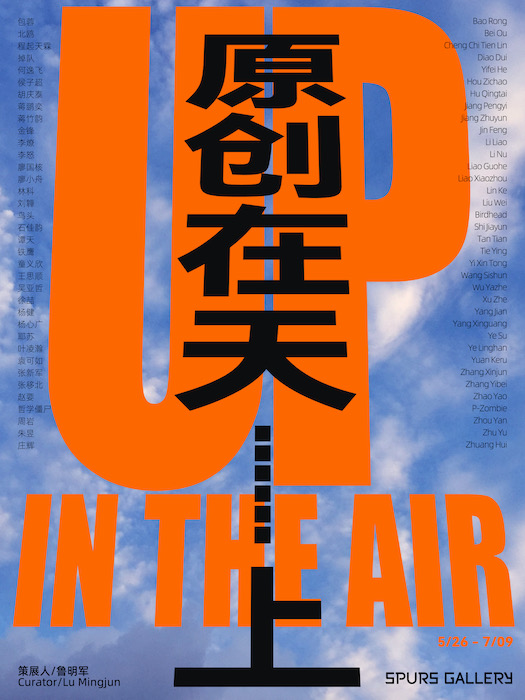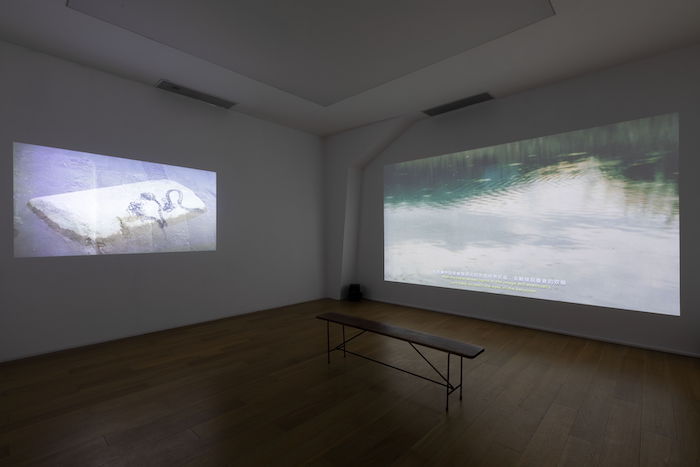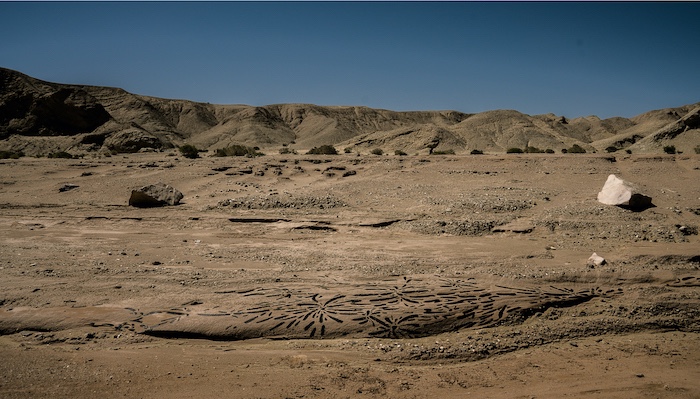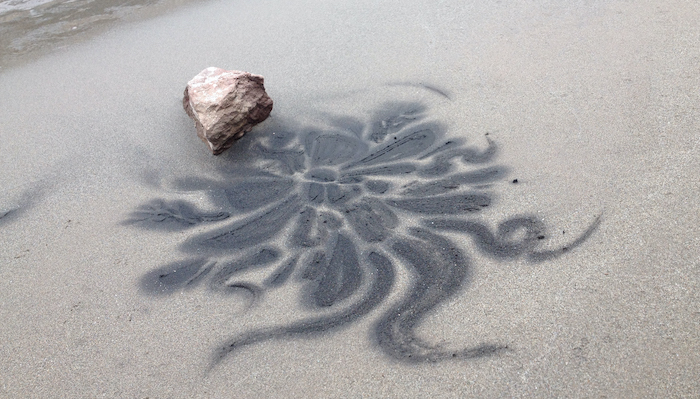
原创在天⋯⋯上
策展人:鲁明军
参展艺术家:包蓉、北鸥、程起天霖、掉队、何逸飞、侯子超、胡庆泰、蒋鹏奕、蒋竹韵、金锋、李燎、李怒、廖国核、廖小舟、林科、刘韡、鸟头、石佳韵、谭天、铁鹰、童义欣、王思顺、吴亚哲、徐喆、杨健、杨心广、耶苏、叶凌瀚、袁可如、张新军、张移北、赵要、哲学僵尸、周岩、朱昱、庄辉
2023年5月26日至7月9日
Gallery I & II|SPURS Gallery,北京朝阳区酒仙桥路二号院798艺术区D-06
Up in the Air
Curated by Lu Mingjun
Artists: Bao Rong, Bei Ou, Cheng Chi Tien Lin, Diao Dui, Yifei He, Hou Zichao, Hu Qingtai, Jiang Pengyi, Jiang Zhuyun, Jin Feng, Li Liao, Li Nu, Liao Guohe, Liao Xiaozhou, Lin Ke, Liu Wei, Birdhead, Shi Jiayun, Tan Tian, Tie Ying, Yi Xin Tong, Wang Sishun, Wu Yazhe, Xu Zhe, Yang Jian, Yang Xinguang, Ye Su, Ye Linghan, Yuan Keru, Zhang Xinjun, Zhang Yibei, Zhao Yao, P-Zombie, Zhou Yan, Zhu Yu, Zhuang Hui
26 May–9 July 2023
Gallery I & II | SPURS Gallery, D-06, 798 Art Zone, 2 Jiuxianqiao Rd, Chaoyang District, Beijing
原创在天⋯⋯上
文/鲁明军
上世纪初,激进的历史前卫运动彻底否定了漫长的艺术惯例及其历史,开启了一个全新的艺术时代。然而,自60年代以来,前卫的原创性却不断遭到质疑,特别是随着全球化和当代以降,几乎所有的前卫行动都不得不退出历史的舞台,替代它的是“复制”“挪用”“后制品”等种种反前卫、反愿景的话语。从此,我们不再相信前卫,也不再相信前卫的原创性,乃至原创性本身。
百年后,AI(如ChatGPT)的出现及其对艺术界及当前艺术惯例的威胁,将我们再次逼到了一个历史关口。且不论它会不会取代艺术家,乃至取代所有创造(意)性的活动,至少,对于我们已经习以为常的艺术创作经验和方式而言,它的出现无疑是致命的。也因此,为“前卫”招魂,重申“原创”的意义,在某种意义上成了艺术家和艺术行业自我“拯救”的道路之一。我们并不期望由是掀起一场伟大的艺术运动,至少可以因应危机,尝试一次彻底的自我清洗和自我革命,尽管这在当前依然举步维艰。
展览更像是一次问卷调查,可喜的是,我们发现应邀参与的36位(组)艺术家普遍对此并不焦虑和悲观,反而表现得格外乐观和积极,甚至觉得这是一个前所未有的机遇。故所谓“原创在天⋯⋯上”,在此包含两层意思:一是我们依然承认原创是个神话,原创只在天上有;二是尽管如此,我们还是相信原创的可能及不可替代的必要,所以,它不只在天上,其实也在人为,只是它需要一个历史的机缘,就像百年前或今天这样。


“拉内卡”水墨涂鸦,(2016-),耶苏
"Ranaka" Ink graffiti, (2016-).Ye Su
Up in the Air
Text/Lu Mingjun
At the beginning of the last century, the radical, historic avant-garde movement gave its resolute disapproval of the long conventions and history of art, to open a brand-new art era. However, the originality of avant-garde later found itself facing constant query since the sixties, and more so upon the arrival of the globalization and the contemporary. Almost all the avant-garde actions had to retire from the stage of history. They were replaced by the anti-avant-garde and anti-visionary discourses such as the ‘replication’, ‘appropriation’, or ‘post-production’. From then on, we had lost our faiths in the avant-garde, the originality of it, and even originality per se.
A hundred years later comes the AI (such as the ChatGPT). Its rising and threat to the world and current conventions of art, once again, pushed us against a critical point of history. At least for the experiences and methods of artmaking we are used to, the AI’s coming is doubtlessly fatal. Not to mention whether it may or may not replace the artists, or all original/creative matters. Thus, for artists and the art business, it somehow becomes one of the roads toward self “salvation” to bring back the Avant-garde from death and reclaim the meaningfulness of Originality. We are not expecting to start a grand movement in art. We expect to at least comply with the crisis, and attempt a sheer cleanse and overhaul in ourselves, which still are difficult progress to make at this moment.
This exhibition resembles a questionnaire. The good news is that we find the 36 artists and groups rather optimistic and positive instead of anxious or pessimistic about AI’s rising. They even think of it as an unprecedented opportunity. The title of this exhibition, “Up in the Air” therefore contains two layers of meanings: first we still acknowledge that originality is a myth, up in the clouds. Secondly, despite so we still believe in the possibility and irreplaceable necessity of the original. And forasmuch, it should not be only in the air, but done – all it needs is an opportunity in history just like the one a century ago, or the one in front of us today.



“拉内卡”水墨涂鸦,(2016-),耶苏
"Ranaka" Ink graffiti, (2016-).Ye Su
拉内卡
“拉内卡”是一个甘肃南部地区的地名,对坐在汽车上一晃而过的旅行者来说,它更像是一个出现在高速公路信号牌上的未知领域。我将“拉内卡”作为引发某种绘画形式的开源代码,创作形式包括:地景绘画、水墨涂鸦、纸本绘画、布面绘画、抽象小品等。
这些作品从动机上更趋向于去捕获意识的流动形式、符号的初始状态、生物体的生长机制等。“拉内卡”尝试让绘画与盖亚系统、意识产生机能发生共振,将特定能量运动的轨迹被解析成图像。
Ranaka
Ranaka is a place in southern part of Gansu province, it is more like an uncharted field appears on a highway sign for a traveler on the car. “Ranaka” for me is like an open source code to trigger some kind of drawing, the form of creations including: ink graffiti, drawing on paper, drawing on canvas, abstract sketches etc.
These works tend to capture the flow of consciousness, the initial state of symbols and the growth mechanism of organisms etc. “Ranaka” tries to allow drawing resonate with Gaia system and consciousness production, and interprets the trajectory of certain energy movement into images.
关于策展人
鲁明军,复旦大学哲学学院青年研究员。策展人。近年策划“疆域:地缘的拓扑”(2017-2018)、“没有航标的河流,1979”(2019)、 “靡菲斯特的舞步”(2021)等展览。在《文艺研究》《美术研究》《二十一世纪》等刊物发表多篇论文。近著有《美术变革与现代中国:中国当代艺术的激进根源》(2020)、《裂变的交响:20世纪中国艺术的三个当代时刻》(2021)、《前卫的承诺:〈十月〉访谈录》(2023)等。2015年获得何鸿毅家族基金中华研究奖助金;2016年获得Yishu中国当代艺术写作奖;2017年获得美国亚洲文化协会奖助金(ACC),同年,获得第10届中国当代艺术评论奖(CCAA);2019年获得中国当代艺术奖(AAC)年度策展人奖。
Lu Mingjun, PhD in History, curator, Young Researcher of the School of Philosophy in Fudan University.His recent curated exhibitions include “Frontier: Re-assessment of Post-Globalisation Politics”(2017- 2018), “Assembling” (2018), “River flowing without a Beacon, 1979” (2019) , “Corner Square Montage” (2019), and “Muses, Yu Gong and Compasses” (2020). His academic essays are published in Literature & Art Studies and Art Research. Recent publications include Social Changes in the Painting Theory of Huang Binhong 1907-1954 (2018) and “Poetic Justice” (2019). Lu was also the grantee of Robert H. N. Ho Family Foundation Greater China Research Grant in 2015; and the Recipient of the Yishu Award for Writing on Contemporary Chinese Art in 2016. He received fellowship grant from Asia Cultural Council (ACC) and was the recipient of 6th Chinese Contemporary Art Critic Award(CCAA) in 2017. He was the Recipient of the Award of Art(AAC) Chinese Contemporary Art Curator Award.
Copyright © 张帆 ZhangFan
